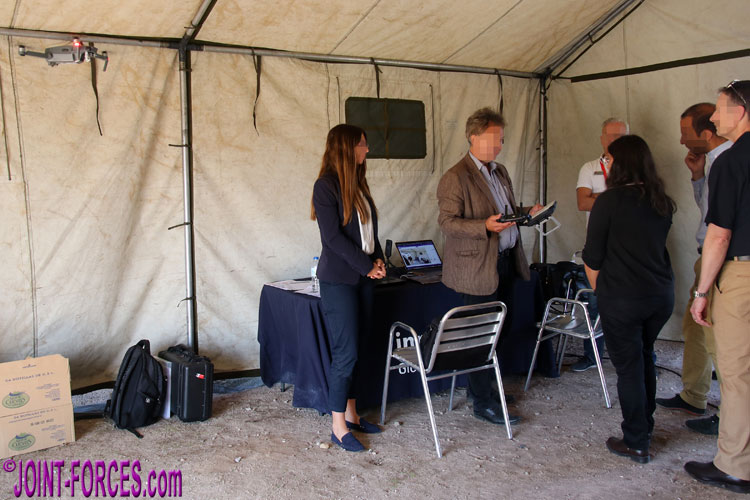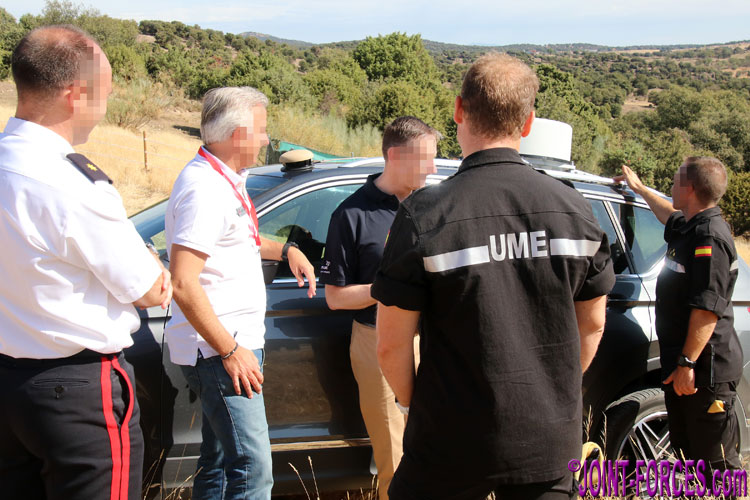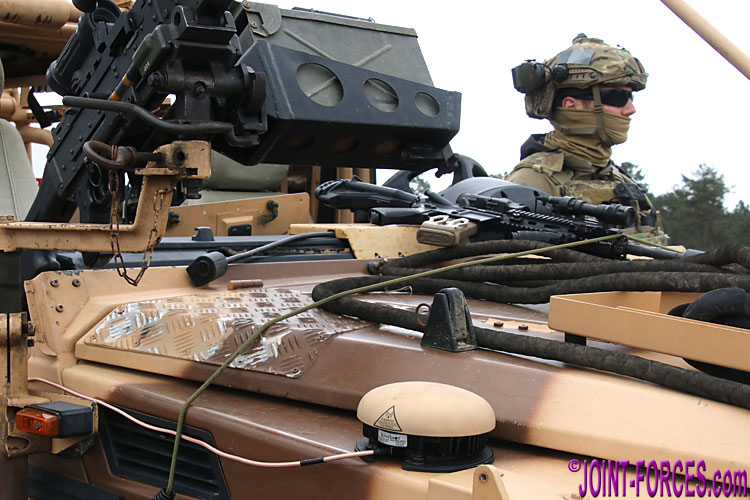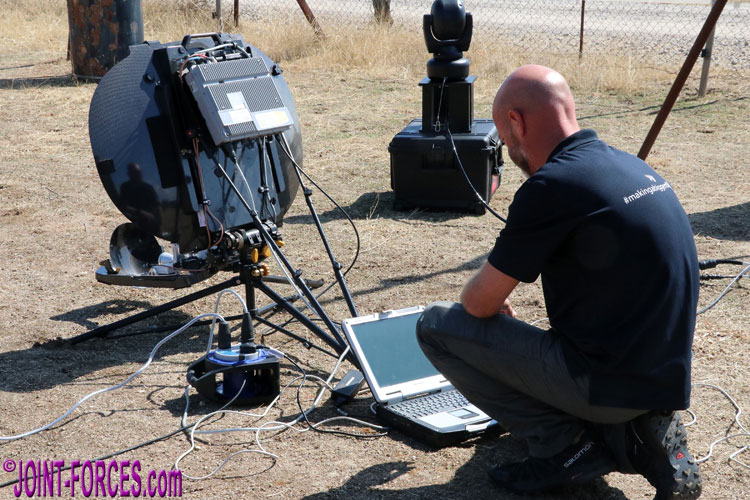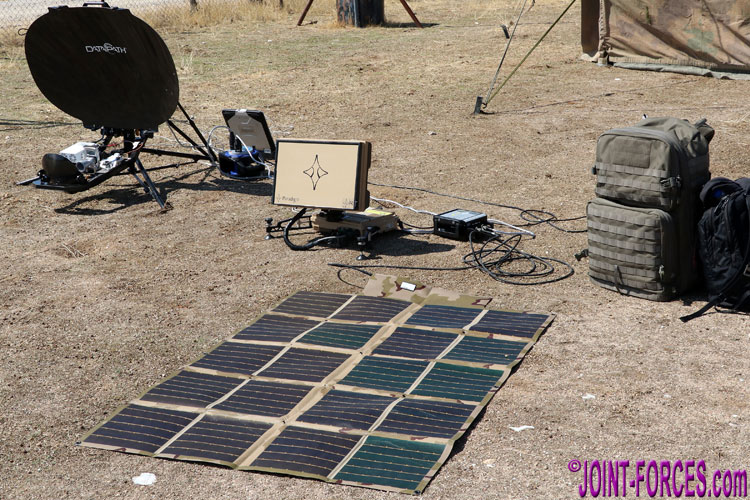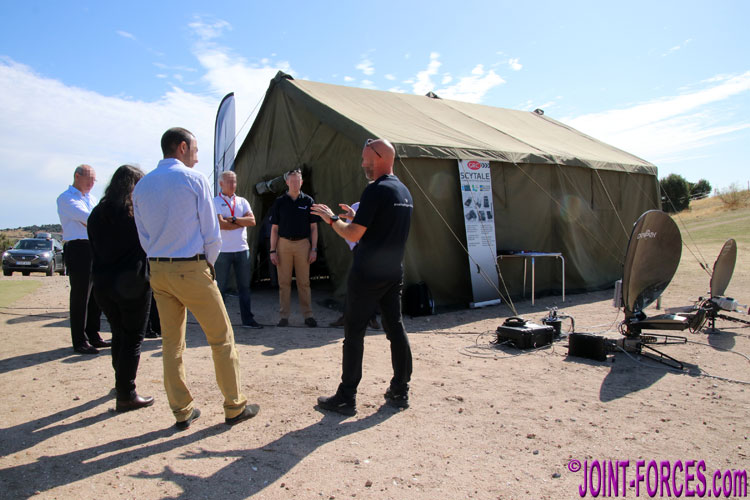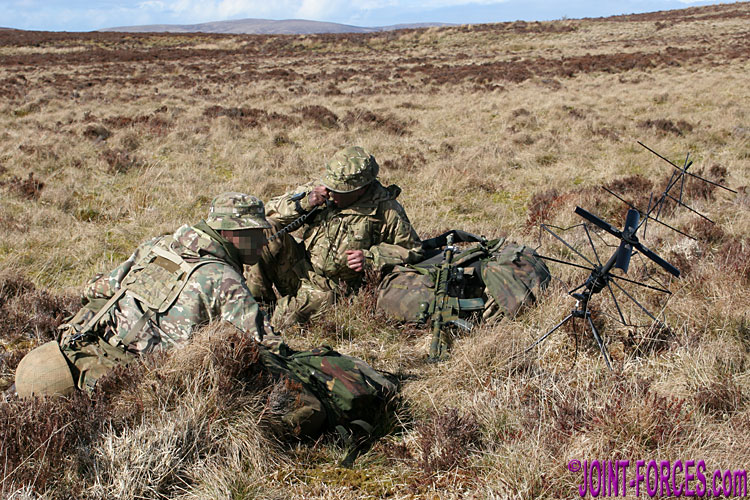BEYOND THE HORIZON is a SatCom solutions ‘roadshow’ organised by Inmarsat to demonstrate mobile solutions for Special Forces and Security Agencies, writes Bob Morrison.
~
Last month, in the week between attending DSEI in London and covering Exercise RAPID TRIDENT near Lviv, we were granted the privilege of attending the Spanish leg of the tour where Inmarsat‘s regional partner Satlink and five other technology partners demonstrated different scenarios involving mobile Satellite Communications solutions to an elite group of Police, Military and Government Security Agency experts.

To showcase the latest technological developments in this specialist and critical field, with specific focus on both the individual SpecOps operative in the field and small teams deployed in remote areas where normal voice and/or data communications can be at best dodgy and at worst non-existent, Inmarsat and Satlink set up both an improvised Tactical HQ (TacHQ) and a small Forward Operating Base (FOB) in a rural location. Two mobile units, one static and the other out on patrol, were made available for the invited operatives, two lightweight manpack sets were used to demonstrate communications in the field beyond line of site, monitored unmanned perimeter security was set up around the FOB, communications links were established with large and small Unmanned Aerial Vehicles or UAVs monitoring the area, links were set up with a maritime patrol craft (even though our location north of Madrid was hundreds of kilometres from the sea) and real-time voice and data communications were initiated with an Operational Headquarters in Norway.
Almost everything we saw during Op BEYOND THE HORIZON was Unrestricted as it is the electronics and the miniaturisation inside, not the boxes themselves, that are the secret bits. Indeed the radio sets and laptop computers used were mostly commercial off-the-shelf (COTS) units as it is the plug-in boxes and the antennae, along with Inmarsat’s geostationary satellites, which are the sneaky-beaky bits; however we were asked to obscure and screens and serial numbers we caught on camera. Additionally, as most of the attendees (who, with the exception of a couple of military officers and two Unidad Militar de Emergencias personnel, were out of uniform) are involved in the SpecOps or Government Security Agencies fields we were asked to obscure faces on OpSec and PerSec grounds.
To get a feel for Op BTH, which since late summer has been touring a number of European countries or regions but which I had been previously unable to attend, I pitched up during set-up day expecting it to be as chaotic as other Defence & Security or Special Operations expos usually are in the build-up to opening day. When I arrived at the rural location to the north of Madrid, specifically chosen for its hilly terrain which would hinder line of sight communications, a small team from Inmarsat’s Spanish partners Satlink was erecting a couple of military tents to act as the TacHQ and FOB at locations a few hundred metres apart and separated by a rocky ridge, but there was no sign of the technicians from the seven companies who would be assembling and operating the comms equipment over the next couple of days. It transpired they were travelling to the demo from across Europe, carrying pretty much everything the needed (other than a back-up generator) with them in rucksacks, hard cases and laptop bags but all would be with us by late morning. For the record, the entire set-up was operational by mid-afternoon and satellite-monitored perimeter security had been set up to keep everything secure overnight.
The seven key companies participating in the demo were: Satellite Communications providers Inmarsat; Spanish-based Inmarsat partner Satlink; Norwegian-based interactive visual solutions provider AnsuR; UK-based unattended security provider Digital Barriers; Israeli-based micronized satellite terminal manufacturer GetSat; UK-based mission critical communication and situational awareness systems designers GRC; and UK-based ISTAR systems provider Seven Technologies Group. Each of the last five companies played a major part in at least one of the five different field scenarios organised by Inmarsat and Satlink and for some scenarios two or more of the five companies integrated their products or services seamlessly to show the wide range of near instantaneous communications capabilities possible using Inmarsat’s network of 13 geostationary orbit satellites some 36,000km above us in space.

The primary aim of Op BEYOND THE HORIZON was to demonstrate to government and military agencies the ease of operating beyond line of sight (BLOS) communications while using existing mobile radios sets, including simple UHF or VHF handsets. If a team or unit has to be rapidly deployed to a distant operational theatre – be that for any of a number of reasons ranging from disaster emergency management to humanitarian assistance provision to peace-enforcing to covert military or security surveillance – Inmarsat can provide a secure satellite communications channel for them over a determined footprint on the earth’s surface allowing them to communicate using their own encryption and their own comms equipment (voice and/or data) with just small plug-in units, such as SlingShot, and omni-directional vehicle-borne or collapsible ‘suitcase’ antennae. Not only this, but the systems allow voice and data transmission on the move at speed from ships and road vehicles, and even from helicopters flying at up to 200km/hr.
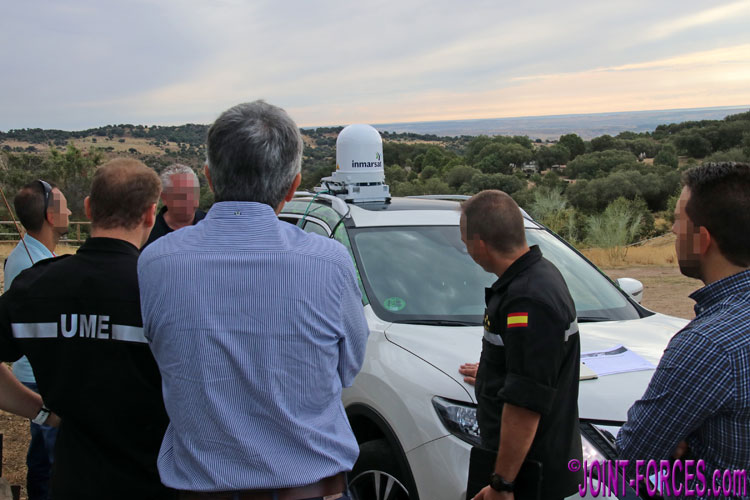
The primary systems exhibited out in the field at Op BTH in Spain were:-
- Inmarsat: The L-TAC PTT (Push To Talk) system using the client’s own existing radios (in this case COTS handsets were used to show versatility) and utilising the client’s own encryption, along with GlobalXpress HTS (High Throughput SatCom) on the move.
- AnsuR Technologies: The ASIGN tactical photo & video communication system and LALE (Low Altitude Long Endurance) UAV (Unmanned Aerial Vehicle) ISR (Intelligence Surveillance & Reconnaissance) systems.
- Digital barriers: an unattended ground sensor and video monitoring system providing camp perimeter security from a far distant base.
- GetSat: Vehicular GX (GlobalXpress) terminals enabling high throughput SatCom on the move
- GRC: ScyTale C2 (Command and Control) enabling systems.
- Seven Technologies Group: Short to long range surveillance systems.
Above: Both long range and short range Unmanned Aerial Vehicles with SatCom packs were used in the demo scenarios [©BM]
The five satellite communications scenarios laid on, in which the two dozen or so invited specialists were able to either participate or just watch and learn, were:~
Scenario1: Push To Talk communications (Manpack, Vehicular, Maritime or Aero) retaining existing encryption using Inmarsat L-TAC – TACSAT to give beyond line of site on the move with no distance limitation with just in-service tactical radios and an omnidirectional antenna. Scenario 2: Interactive tactical quick sharing of high resolution BLOS UAV photo & video clip streaming communications using a 1.4kg L-Band terminal plus AnsuR ASIGN technology and BLOS air vehicle control.
Scenario 3: Seven Technologies short to long range surveillance systems for covert observation and intelligence gathering in hostile environments, with remote triggered operation and integrated with the Digital Barriers perimeter security.
Scenario 4: Rapidly deployable Unattended Ground Sensor System and Video Monitoring using the Digital Barriers’ EDGEVIS SHIELD, with sensors forming their own mesh network and triggering sensor cameras, transmitting real time video over low bandwidth and high latency connections via satellite.
Scenario 5: Command and Control (C2) enabling systems: at the Tactical HQ, with Scytale Plus / Lite, VoIP, Secure data VPN, 3G Tactical bubble, Information Assurance at IL2, end user access and/or crypto devices ready, and high bandwidth and multiple LAN capable; at the Forward Operating Base with Scytale Lite, VoIP handsets, GSM, Wi-Fi and Secure Data VPN; on moving Mobile Patrol Unit 1, Scytale Mini, Wi-Fi hotspot, LAN, and Secure Data VPN.
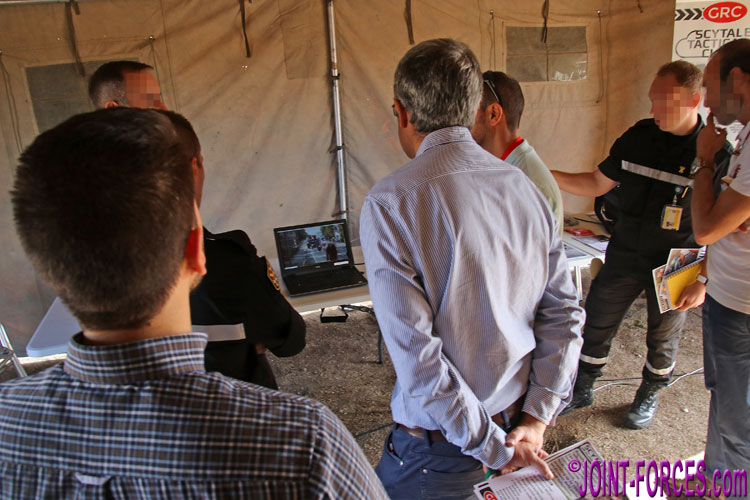
Now I am by no means a communications expert, but over the last three decades I have seen one heck of a lot of military and NGO communications on the many training exercises and operational deployments I have covered and as a result I am well aware of the challenges faced out in the field; some of the military operations which have gone awry due to radio communications difficulties are legendary. The apparent simplicity and ease of use, not to mention the comparatively light weight and compact dimensions, of the Inmarsat kit I saw in use in quite challenging conditions out in Spain during Op BTH made me appreciate that some of those somewhat far-fetched satellite surveillance scenes from James Bond films and the like are now actually much closer to reality than possibly even the writers and producers realise. Thanks for the insights Inmarsat & friends.
[images © Bob Morrison]
